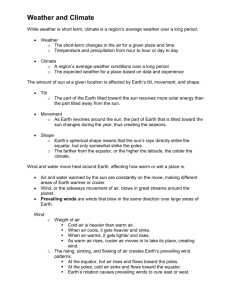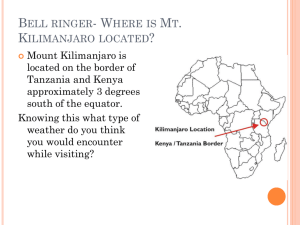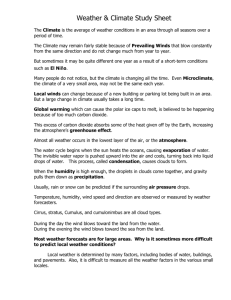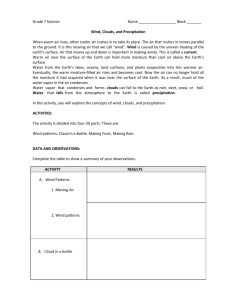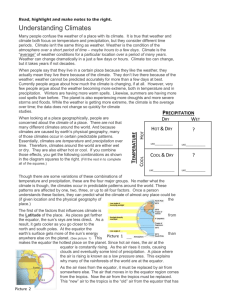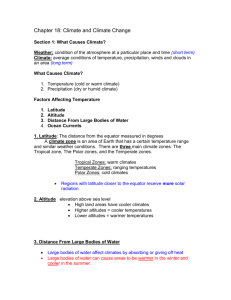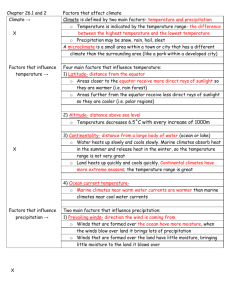Q: What determines climate?
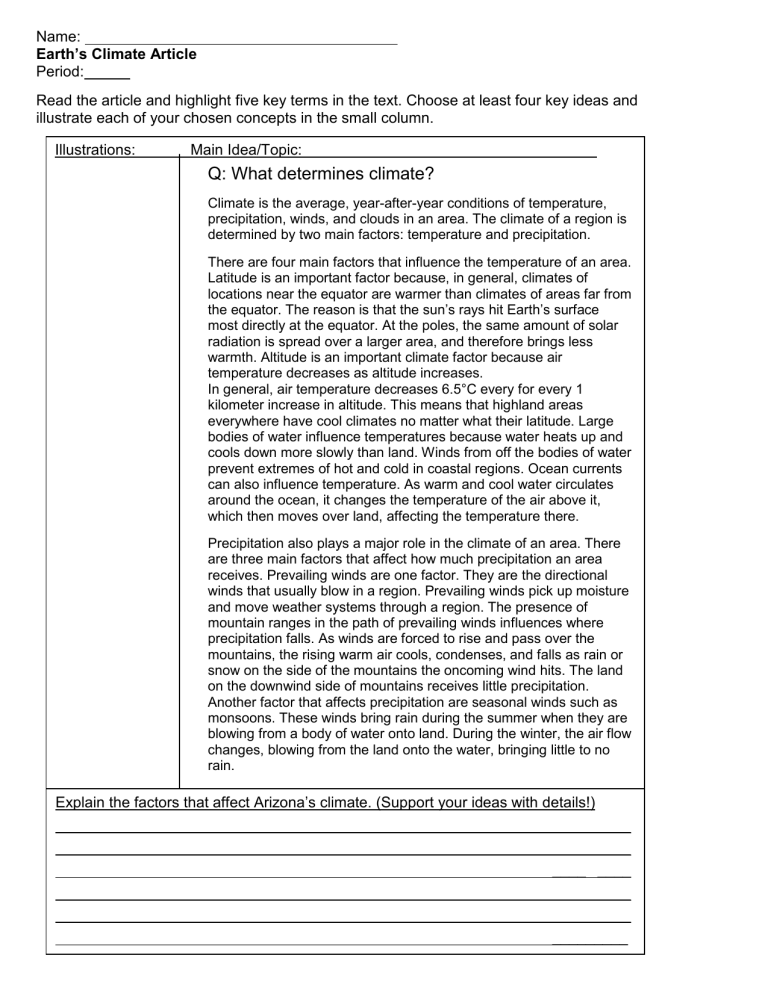
Name:
Earth’s Climate Article
Period: _____
Read the article and highlight five key terms in the text. Choose at least four key ideas and illustrate each of your chosen concepts in the small column.
Illustrations: Main Idea/Topic:
Q: What determines climate?
Climate is the average, year-after-year conditions of temperature, precipitation, winds, and clouds in an area. The climate of a region is determined by two main factors: temperature and precipitation.
There are four main factors that influence the temperature of an area.
Latitude is an important factor because, in general, climates of locations near the equator are warmer than climates of areas far from the equator. The reason is that the sun’s rays hit Earth’s surface most directly at the equator. At the poles, the same amount of solar radiation is spread over a larger area, and therefore brings less warmth. Altitude is an important climate factor because air temperature decreases as altitude increases.
In general, air temperature decreases 6.5°C every for every 1 kilometer increase in altitude. This means that highland areas everywhere have cool climates no matter what their latitude. Large bodies of water influence temperatures because water heats up and cools down more slowly than land. Winds from off the bodies of water prevent extremes of hot and cold in coastal regions. Ocean currents can also influence temperature. As warm and cool water circulates around the ocean, it changes the temperature of the air above it, which then moves over land, affecting the temperature there.
Precipitation also plays a major role in the climate of an area. There are three main factors that affect how much precipitation an area receives. Prevailing winds are one factor. They are the directional winds that usually blow in a region. Prevailing winds pick up moisture and move weather systems through a region. The presence of mountain ranges in the path of prevailing winds influences where precipitation falls. As winds are forced to rise and pass over the mountains, the rising warm air cools, condenses, and falls as rain or snow on the side of the mountains the oncoming wind hits. The land on the downwind side of mountains receives little precipitation.
Another factor that affects precipitation are seasonal winds such as monsoons. These winds bring rain during the summer when they are blowing from a body of water onto land. During the winter, the air flow changes, blowing from the land onto the water, bringing little to no rain.
Explain the factors that affect Arizona’s climate. (Support your ideas with details!)
____ ____
____ ____
____ ____
____ ____
____ ____
_________
